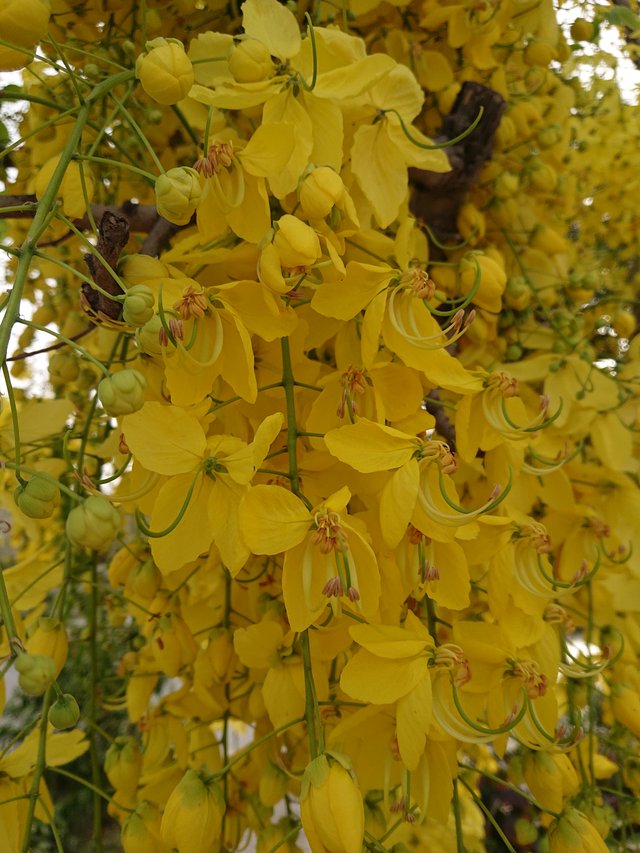The golden shower tree (Cassia fistula) is a species of flowering plant in the family Fabaceae, native to the Indian subcontinent and Southeast Asia. It is widely cultivated as an ornamental tree for its beautiful golden-yellow flowers and is also known by various other names, including Indian laburnum, pudding-pipe tree, and golden shower cassia.
Here are some key features of the golden shower tree:
Appearance: The tree is medium-sized, reaching heights of about 10 to 20 meters (30 to 60 feet). It has a spreading crown with drooping branches and a straight trunk. The leaves are pinnate, with numerous leaflets that are green and smooth.
Flowers: The most distinctive feature of the golden shower tree is its flowers. The flowers are large and pendulous, with a bright yellow color, hence the name "golden shower." They are arranged in long, hanging clusters called racemes, which can reach up to 60 centimeters (2 feet) in length. The flowers have five petals, and the central petal is often streaked with red.
Blooming season: The golden shower tree typically blooms during the summer months, producing an abundant display of flowers. The blooming period can last for several weeks.
Fruits: After the flowers fade, long, cylindrical pods develop. These pods are initially green but turn dark brown as they mature. Each pod contains numerous seeds. The pods can reach lengths of about 30 to 60 centimeters (12 to 24 inches).
Cultural significance: The golden shower tree holds cultural and religious significance in many parts of its native range. In some countries, such as Thailand and Malaysia, it is the national flower. It is also associated with festivals and ceremonies in different cultures.
Medicinal uses: Various parts of the golden shower tree, including the bark, flowers, and leaves, have been used in traditional medicine for their potential therapeutic properties. They have been employed to treat ailments such as constipation, skin diseases, and inflammation.
Ornamental tree: Due to its striking appearance and beautiful flowers, the golden shower tree is widely planted as an ornamental tree in gardens, parks, and along streets in tropical and subtropical regions. It prefers a sunny location and well-drained soil.
It's important to note that while the golden shower tree is a visually stunning and culturally significant plant, some caution should be exercised when handling its parts or consuming any herbal preparations, as certain components may have adverse effects or interact with medications. If you're considering using it for medicinal purposes, it's best to consult a qualified healthcare professional.
